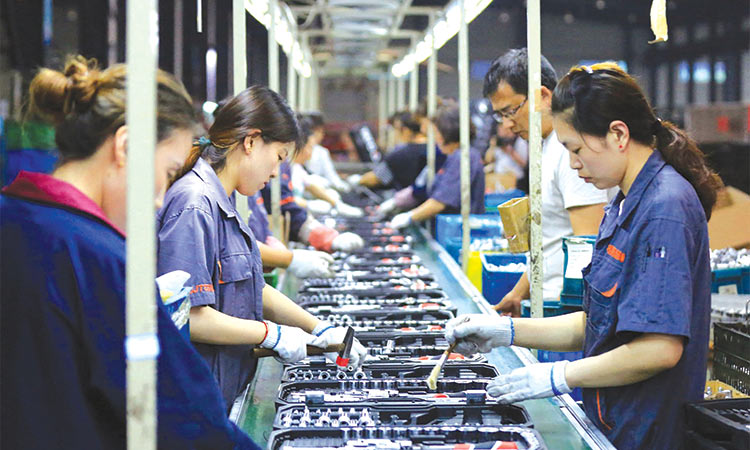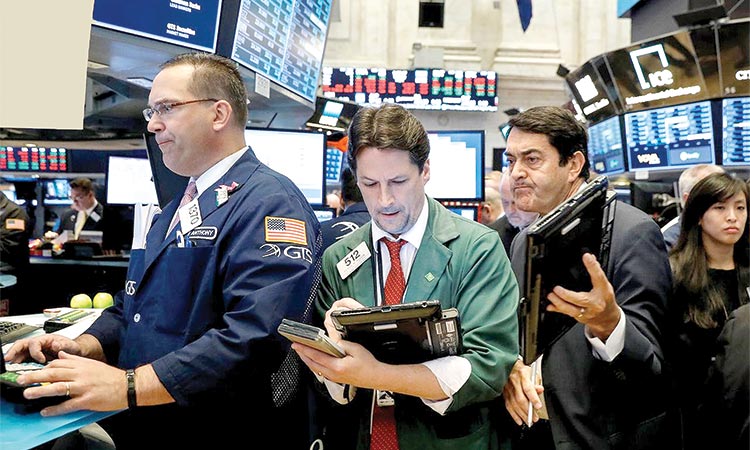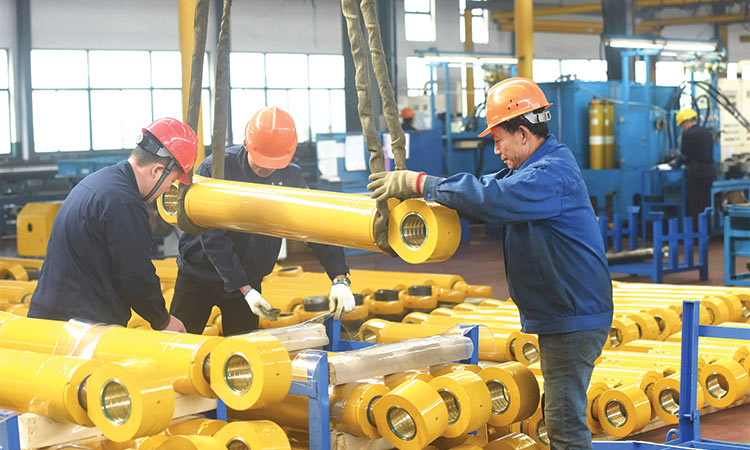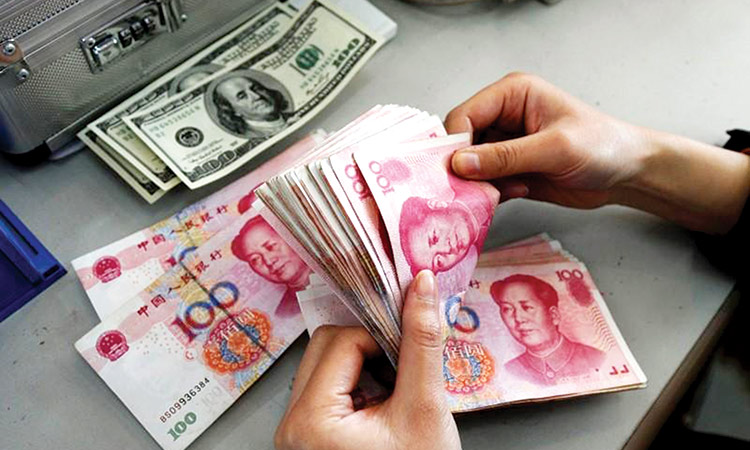China’s factory activity shrinks at a sharper pace in December

Employees work on the production line of high speed train components in Shanghai, China. Reuters
The Caixin/Markit manufacturing purchasing managers’ index (PMI) fell to 49.0 in December from 49.4 in November. The index has stayed below the 50-point that separates growth from contraction for five straight months.
The reading was the lowest since September but beat analysts’ forecast of 48.8 in a Reuters poll.
China’s larger official PMI survey showed a much sharper decline, with the activity index falling to a near three-year low. The Caixin survey focuses on smaller, export-oriented firms.
The figures provide a snapshot of the challenges faced by Chinese manufacturers who now have to contend with surging infections after the country’s abrupt COVID policy U-turn in early December.
“Supply contracted, total demand remained weak, overseas demand shrank, employment deteriorated, logistics was sluggish, manufacturers faced growing pressure on their profitability, and the quantity of purchases as well as inventories stayed low,” said Wang Zhe, senior economist at Caixin Insight Group.
Weakening external demand amid slowing global growth continued to drag on orders for export-oriented producers, with the Caixin sub-index of new export orders shrinking at the fastest pace since September.
Logistics snags lengthened suppliers’ delivery times for the sixth month in a row, while employment in the manufacturing sector contracted for the ninth consecutive month due to muted production levels and difficulties sourcing workers amid the virus outbreaks.
However, manufacturers were still somewhat upbeat with the sub-index of future output surging to the highest since February as COVID restrictions were rolled back.
Some analysts anticipate labour shortages and increased supply chain disruptions, combined with softer customer demand, may drive a further fall in production in winter months, even if mobility curbs are eased.
“With COVID-zero now in the rear-view mirror, markets expect a gangbusters 2023 recovery,” said Derek Scissors, chief economist at the China Beige Book.
“That will be right, eventually. However, with the ongoing COVID tidal wave, investment sliding to a 10-quarter low, and new orders continuing to get battered, a meaningful Q1 recovery is increasingly unrealistic.”
However, Sheana Yue, China economist at Capital Economics, said she does not read too much into the immediate significance of both the official and Caixin PMIs, given their tendency to overstate industrial disruptions from some past outbreaks.
“In the meantime, the upcoming Spring Move will likely see the spread of the virus continue into more rural areas which will depress the services sector further,” Yue said, referring to the annual mass migration that takes place before and after the Lunar New Year holiday.
The Caixin services PMI reading for December will be published on Thursday.
Chinese leaders have pledged to step up policy adjustments to cushion the impact on businesses and consumers of a surge in COVID infections at a time when a weakening global economy is hurting exports.
The world’s second-largest economy grew 3 per cent in the first nine months of 2022 and is expected to stay around that rate for the full year, one of its worst years in almost half a century.
The weak factory survey from China, the world’s largest crude importer and second-largest oil consumer, was a bearish factor for oil. The Caixin/Markit manufacturing purchasing managers’ index fell to 49.0 in December from 49.4 in November. The index has stayed below the 50-point mark that separates growth from contraction for five straight months.
“The market cannot expect a rapid recovery of the Chinese economy after three years of (pandemic controls), the mass bankruptcy of small and medium-sized enterprises, the soaring unemployment rate, the rapid increase in the social savings rate, and the rapid growth in the number of infections and deaths in recent months,” said Leon Li, an analyst with CMC Markets in China.
This followed news of a larger-than-expected increase in the first batch of oil product export quotas for 2023 released by China’s government. A handful traders attributed that to expectations of poor domestic demand as the country continued to battle waves of COVID-19 infections.
Further darkening the outlook, IMF Managing Director Kristalina Georgieva said on Sunday that the United States, Europe and China - the main engines of global growth - were all slowing simultaneously, making 2023 tougher than 2022 for the global economy.







